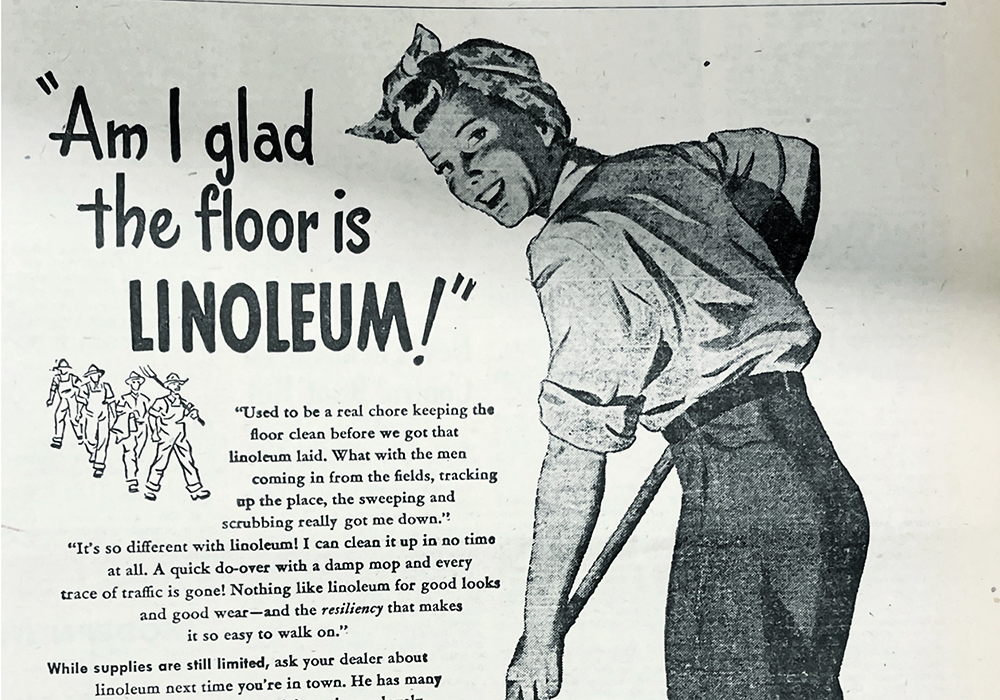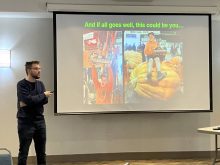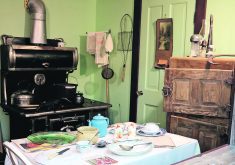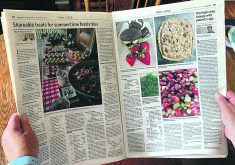Through the years of depression, drought and war, governments had few funds to upgrade health care, infrastructure and highways.
In 1945, outside of the major cities, hospitals and ambulance services were primitive, electrical power was limited and highways and country roads were often closed by blizzards, rain or the spring thaw. Rural homes had received little or no maintenance during this time and most lacked indoor water, bathrooms, flush toilets and electricity.
The end of the Second World War in September 1945, led to a time of transition. It took time to pay out military production contracts and for the manufacturing sector to shift to domestic production. The government also needed to focus on the return of the overseas troops and personnel to Canada, and, in 1946, to transport 48,000 war brides and their 22,000 children to this country.
By 1947, the prairie governments were budgeting to improve roads and bridges. In Saskatchewan, $7 million was budgeted for highways compared with $2.9 in 1943-44.
Before rural electrification could proceed, power-generating plants needed to be built or acquired. In 1948, the Manitoba Power Commission planned to spend $4 million a year on rural electrification, hoping to service 5,000 farms that year. Saskatchewan announced its rural electrification plans in March 1949.
Health care was a concern. There was a shortage of doctors, nurses and health-care facilities in addition to alarming increases in serious illnesses.

Western Producer women’s editor Violet McNaughton noted in her Feb. 6, 1947, column that “in the first 11 months of 1946 there were over 39,000 new cases of syphilis and gonorrhea reported in Canada.”
Trying to head off the spread, an amendment was made to the Saskatchewan Marriage Act effective Sept. 1, 1945. “The medical examination of brides and bridegrooms required a blood test for syphilis taken within 30 days before the marriage.”
In 1947, there were more than 160 recorded cases of poliomyelitis (polio) in Saskatchewan. From Jan. 1, 1944, to March 31, 1947, 77 cases had been treated at the St. Paul’s Hospital in Saskatoon. In 1947, a 50-bed clinic at the Regina General Hospital and a smaller clinic in Moose Jaw were added.
To help deal with the shortage of doctors, nurses and hospital beds, in February 1947, plans for a 575-bed hospital at the University of Saskatchewan were approved by the university hospital board. A large nurses’ residence would accommodate 250 nurses, as well as teaching space for the School of Nursing. Doctors would be trained at the hospital through the College of Medicine.

On Feb. 3, 1946, the Saskatchewan Air Ambulance Service made its first flight with former war-time flier Keith Malcolm using a war surplus Royal Canadian Air Force Norseman utility plane. It was the first formally organized, non-military air medical transport service in North America. During the first year, more than 400 calls were received.
The availability of schools was a vital concern for rural families. Because of a lack of teachers, some rural schools had been closed. Larger school units were being formed and new schools were built as materials became available. The larger units offered uniform tax rates, increased teachers’ salaries and better library facilities.
An act to provide for the establishment and maintenance of regional libraries in Saskatchewan was passed in 1946.
Many food items and building materials were still difficult to find because of shortages and controls. Some favourite products were returning as shown in a Sept. 18, 1947, Western Producer advertisement that announced Heinz tomato products, including ketchup, were now available.
During the early years in Western Canada, women’s community service clubs like United Farm Women and The Homemakers provided connections with other women and helped to combat the isolation of farm life.
The women in these groups worked to improve their communities and pushed for better health care and schools and created small, free circulating community libraries. They became known as strong lobbyists for rural women’s concerns.
In addition to their community work, during the war these groups gathered and sent encouragement packages to service personnel and relief packages for war victims. With the building of new hospitals, schools and libraries, many of their desires were being realized.
In rural communities, there was a need for educational opportunities for young adults that would encourage them to continue farming. University extension specialists conducted six-week long youth training schools where homemaking and farming skills, horticulture, gardening, food preservation and animal husbandry were taught. In 1949, a vocational agricultural course was established at the university for young men to learn the practical skills required for farming.
Saskatchewan farmsteads were looking dilapidated. A 1947 government survey revealed that 78 percent of Saskatchewan’s farm buildings badly needed a paint job, 38 percent of the buildings had never been painted and 40 percent had not been painted during the past 10 years.
In 1948, the Saskatchewan department of reconstruction and rehabilitation organized six mobile spray-painting units that travelled to farms to paint. In three days, a farmhouse and barn would receive two coats of paint plus trim.
With increasing prosperity, improved roads and the possibility of electricity, it was time to look at replacing aging, unmodern farm homes. A team of architects and engineers were working on farm home plans.

To provide input from farm women, the Canada Mortgage and Housing Corp. and the Saskatchewan Department of Reconstruction announced in January 1948 a Better Farm Home Competition. It was open to women’s groups rather than individuals to encourage group discussion and shared ideas. From the results, in-house water was the top priority and second was electricity. With electricity came the possibility to have a pressure system, running water and a flush toilet.
A Sept. 18, 1947, linoleum flooring ad boasts that the “flooring is easy to care for.” The ad also encouraged farmers to increase their production of flax to supply the linoleum industry to meet the growing demand. What the farmer produced could now come directly back to provide flooring in his new farm home.
In 1947, Emmie Oddie, a nutritionist, farm wife and mother, began writing articles for The Western Producer. Her column, entitled I’d Like to Know, offered answers to readers’ questions, along with food, nutrition and consumer advice. She wrote this column for almost 50 years.
The engagement and wedding of Princess Elizabeth and Lieut. Philip Mountbatten on Nov. 20, 1947, brought excitement and hope to people working their way out of years of suffering and war.
Betty Ann Deobald, one of The Western Producer’s TEAM Resources columnists, will write a monthly column for the next year examining rural life in each decade of the last century.
















